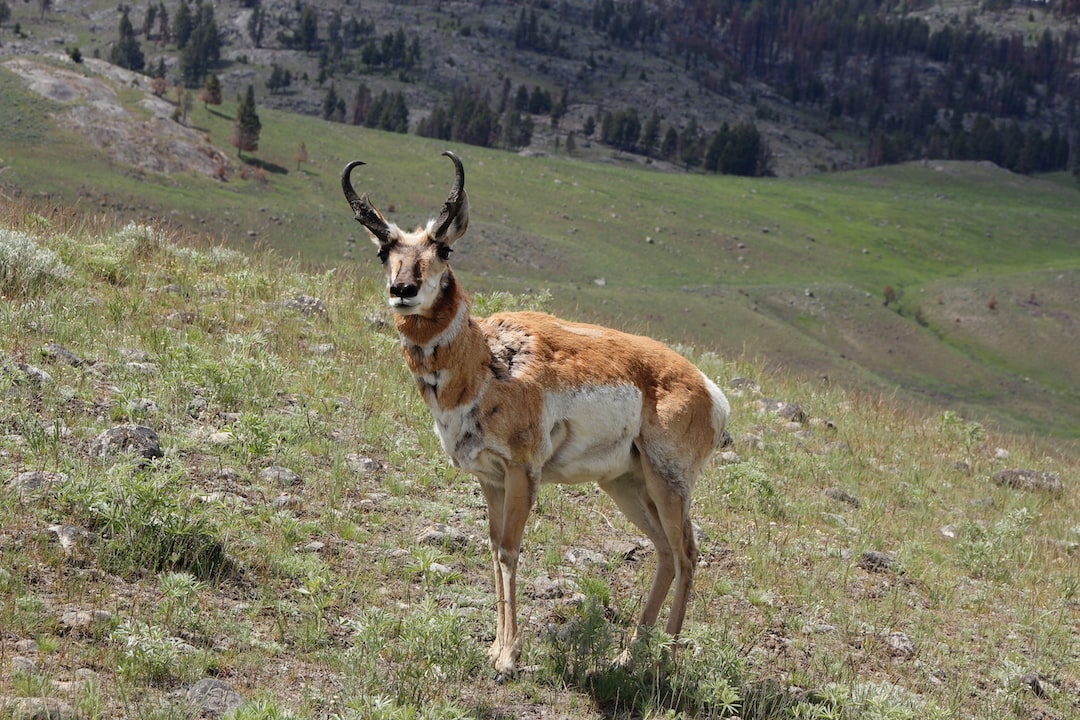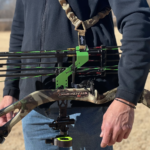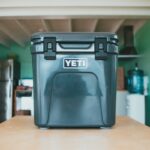Are you an outdoors enthusiast looking to up your game when it comes to hunting antelope? Have you ever considered using a decoy in your setup?
Antelope decoys can be used as part of an effective strategy for archery hunters.
Whether you’re new to the sport or are just curious about how these tools work, this blog post is here to give you all the information needed on antelope decoys and their use.
We’ll cover everything from what types of antelopes respond best, how they react, setting up a stand with one, and more. So let’s get started learning about the amazing possibilities that come with using an antelope decoy.
What is an Antelope Decoy?
An antelope decoy is a realistic-looking replica of an antelope that hunters use to attract game. It can be used in combination with calls, scents, and other techniques to lure animals into shooting range. The decoy is typically made from lightweight plastic or foam and features lifelike details such as fur, horns, eyes, and hooves.
What Does an Antelope Decoy Look Like?
An antelope decoy looks like, well, a real antleope.
It has a head and neck that are proportionate to the size of the animal it’s designed to represent; usually either mule deer or pronghorn (antelope). The body is often filled with air so it stands upright when placed on the ground. Some models even have moveable parts such as ears or tails for added realism.
How Does an Antelope Decoy Work?
When set up correctly in a hunting area, an antelope decoy will draw curious animals closer for inspection by creating visual interest.
This gives hunters more time to prepare their shot before taking aim at their target. Additionally, some models come equipped with motion sensors which trigger movement when activated by passing wildlife – further increasing its effectiveness at attracting game within range of your bow or rifle.
A decoy fashioned after an antelope may prove advantageous for hunters, enabling them to attract game from greater distances than they would ordinarily be able to. Moreover, employing a decoy affords the hunter an opportunity to remain stationary and conserve energy while still effectively drawing game from greater distances.
Antelope decoys are an effective and popular hunting tool for the serious outdoorsman. By understanding how they work and what types of antelope decoys are available, you can make sure that your next hunt is a success.
Exploring the various kinds of antelope decoys that can be utilized by hunters is a great way to ensure a successful hunting expedition.
Types of Antelope Decoys
Antelope decoys are an important tool for any hunter looking to increase their success rate. A plethora of antelope decoys exist, each featuring its own advantages and disadvantages.
Montana Decoys are some of the most popular antelope decoys on the market today.
These lightweight and durable decoys feature realistic designs that make them almost indistinguishable from real animals at a distance. The range of sizes available make it effortless to find the perfect decoy for any situation. Montana Decoy’s “Big Sky Buck” is especially popular among hunters as it features an impressive 11-point rack and lifelike movement when used with their motion system.
Popular Antelope Decoy models include those made by Primos Hunting Calls, Hunter Specialties, Avery Outdoors, and Flambeau Outdoors.
Each company offers a wide selection of realistic-looking antelope decoys designed to attract even the wariest game animals into range for a successful hunt. Many of these companies also offer accessories such as scent wicks or motion systems to further enhance your setup’s effectiveness in attracting game animals within shooting range.
Wearing some stalking shoes is another great tip to help you get in close to make the shot.
Finally, there are Antelope Decoy Hats which can be worn while hunting to provide additional camouflage when stalking prey up close or setting up stands near feeding areas where they may not notice you otherwise due to their keen sense of smell or hearing capabilities.
These hats usually feature realistic fur patterns along with adjustable straps so they can fit snugly over any size head without being too bulky or uncomfortable during long days out in the field tracking game animals downwind from you. The added benefit is that these hats help break up your silhouette against the horizon line, making it easier for game animals like antelopes to spot you before you have time to take aim.
Selecting the appropriate decoy is essential for a successful antelope hunt, so be sure to select one that best fits your situation and region. Now let’s move on to how you can set up an effective antelope stand with a decoy.
How to Setup an Antelope Stand with a Decoy
When it comes to hunting antelope, setting up a decoy can be an effective way to attract them.
Decoys are designed to mimic the appearance and behavior of real animals in order to draw attention from game. When selecting a location for your stand and decoy setup, look for areas with plenty of cover such as tall grass or shrubs that will help conceal you while still allowing you to see approaching animals.
Additionally, try to choose an area where the wind is blowing away from your position so that any scent won’t alert nearby wildlife.
Once you have chosen a spot, it’s time to set up the stand and place the decoy correctly. Start by positioning your stand at least 10 yards away from where you plan on placing the decoy so that when animals approach they don’t detect any human scent near it.
Next, use natural materials like sticks or branches around the base of the decoy in order to make it appear more realistic and life-like.
Finally, adjust its position until it looks natural within its surroundings – if possible try angling its head slightly towards where you plan on shooting from so that deer will naturally look in your direction when they come close enough for a shot.
Finally, there are some tips which can help make your setup even more effective. Use scents like doe urine or buck lure around your setup; this helps create an inviting atmosphere which encourages animals into range.
Additionally, consider adding movement by using motorized models which simulate feeding or other behaviors. Lastly, camouflage yourself well with clothing specifically designed for hunting; this will ensure that no matter how close deer get they won’t notice anything out of place.
Installing an antelope stand with a decoy can be intricate, but if done properly it can significantly enhance your likelihood of triumph. Now that you know how to properly setup your stand and decoy, let’s explore the way antelopes react to them and how to tell if they’re interested in your setup.
How Do Antelope React to Decoys?
Do Antelope Respond to Calls?
Yes, antelopes can respond to calls. This is especially true when a hunter uses a decoy. A decoy will help attract the attention of an antelope and make it more likely that they will come closer for a better look.
When used correctly, calling can be very effective in bringing an animal within range of the hunter’s weapon. Different species of antelopes have different vocalizations which should be taken into account when using calls or decoys.
Do Different Species of Antelopes React Differently to a Decoy?
Yes, different species of antelopes react differently to a decoy depending on their natural behavior and habitat preferences.
For example, some species are more skittish than others and may not approach as closely if they sense danger from the presence of the decoy or any other disturbance nearby. Other species may be less cautious and more curious about new objects in their environment such as a decoy placed by hunters in order to draw them close enough for shooting range with archery equipment or firearms.
Antelope are highly curious animals, and when presented with a decoy they will often investigate it. Knowing how to use scent, movement, and other tactics can help you take advantage of this curiosity to improve your success when archery hunting – but first we need to understand the basics of antelope behavior in relation to decoys.
How Can a Decoy Improve Success When Archery Hunting?
Utilizing a decoy can be an advantageous approach to up one’s odds of success when it comes to archery hunting. Decoys are used to attract animals by mimicking their behavior and movements.
By understanding how antelope react to decoys, you can use them in combination with other tactics like scent and movement to draw animals closer for a better shot.
Using Scent and Movement To Attract Animals:
Antelope are naturally curious creatures that will investigate anything out of the ordinary or something they find interesting. Using scents such as doe urine or buck lure around your stand is one way to get their attention and bring them closer for a better shot.
Additionally, adding some movement into the mix can also help draw antelope in from further away. This could include waving flags, spinning wind vanes, or even just walking around your stand area periodically throughout the day.
When setting up a decoy, there are two options available – motionless or moving targets. Motionless targets can be effective when placed close enough that an animal must investigate before deciding if it is safe while moving ones tend to draw animals from further away due to their realistic movements and sounds making them appear more lifelike than stationary objects in the environment.
Finally, if you’re planning on using a bow and arrow while hunting with a decoy setup then accuracy is key.
Make sure to practice shooting regularly so that you become comfortable with aiming at different distances as well as adjusting for wind speed and direction when necessary. This will ensure that when game time arrives, you have greater confidence in taking shots quickly without having too much time spent trying to line up each shot perfectly every single time.
FAQs in Relation to Antelope Decoy
Do antelope decoys work?
Yes, antelope decoys can be effective in attracting game. When used correctly, they can create a realistic illusion of an animal that will draw the attention of other animals nearby. The key is to use them in combination with other tactics such as calling and scent control.
Placement of the decoy should also be considered carefully; it should be placed where it won’t spook potential game away from your hunting area. With proper setup and execution, antelope decoys can help increase your chances for success when hunting these animals.
How do you use an antelope decoy?
An antelope decoy is a great tool for hunters looking to draw in their prey. Set it up however best suits the situation, be it static or dynamic – and make sure to keep it at eye-level and facing away from your location for optimal success.
To use it effectively, set up the decoy in an open area where you expect game to pass through. Make sure that it is placed at eye level and facing away from your position so that animals won’t be spooked by movement when they approach.
Adjust its position periodically to keep them interested and add some motion with flags or other items if necessary. Be patient and wait for the perfect shot.
Is it better to use a buck or doe decoy?
It depends on the situation. Generally, a buck decoy is more effective during the rut when bucks are actively searching for does. Doe decoys can be used to draw in curious bucks or to keep them from leaving an area.
During other times of year, doe decoys may be better at attracting bucks since they represent potential mates and food sources. Ultimately, it’s best to use both types of decoys depending on the season and your goals as a hunter. Vary your approach and explore various amalgamations to discover the most successful tactic for you.
Should I use a decoy during the rut?
Yes, using a decoy during the rut can be an effective way to attract deer. Decoys are designed to mimic the look and behavior of real deer, which can draw in curious bucks that may otherwise stay away from your hunting area.
Additionally, when used correctly, decoys can help create a sense of competition among bucks for breeding rights with the “doe” in the decoy. When used properly, decoys offer hunters an edge when it comes to bagging big game during this crucial time of year.
Conclusion
Using an antelope decoy is a great way to increase your chances of success when archery hunting. Not only do they help attract the attention of passing antelope, but they also provide a realistic and life-like representation that can be used to lure them in for closer shots.
Whether you choose a traditional Montana decoy or something more modern, having an antelope decoy on hand can be a huge asset when out in the field. So if you’re looking to up your game this season, consider investing in an antelope decoy.



